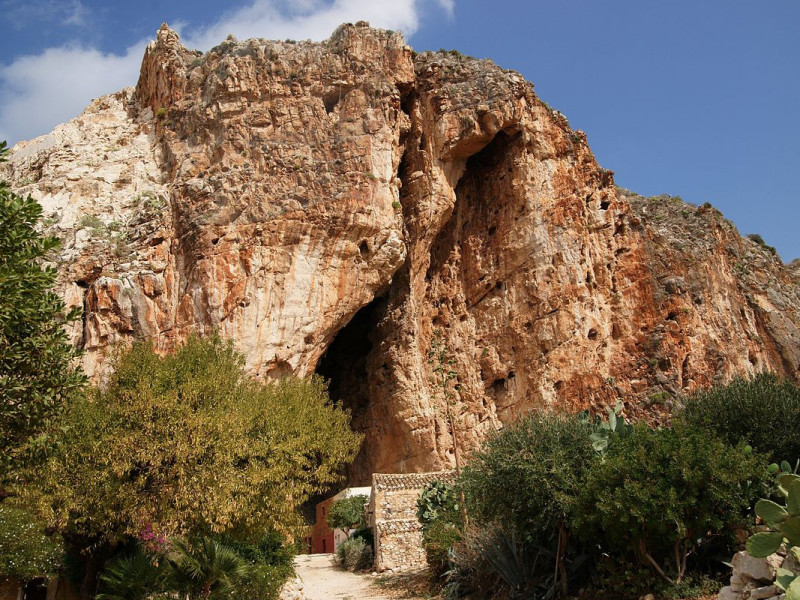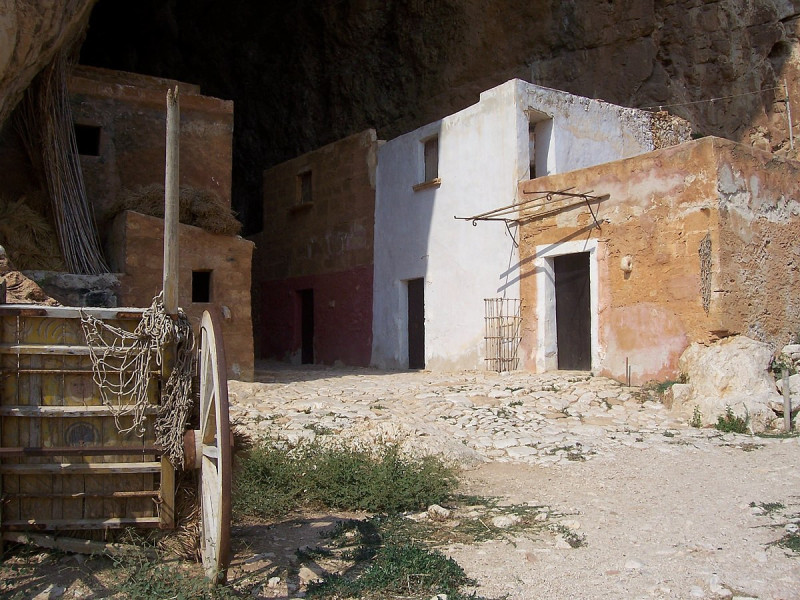Grotta Mangiapane (Grotte di Scurati)
Scurati Caves are an ancient Prehistoric settlement and a geological speleological of the municipality of Custonaci, in the province of Trapani. Inside there is a small village, inhabited from 1819 up to the middle of the 20th century. The first archaeological studies, conducted by the Marquis Guido Dalla Rosa in 1870 and by French paleontologist Raymond Vaufrey, in 1925, brought to light flint tools and graffiti dating back to Upper Palaeolithic. The largest and most famous of the caves, Grotta Mangiapane, about 70 meters high, 13 wide and 50 deep, is also called "Grotta degli Uffizi", because inside it, among the many Prehistoric finds, were found teeth and bones of animals, worked flints, obsidian and rock paintings still preserved at Pepoli Museum and Ethno-Anthropological Museum of Paris. Some episodes of the TV series Il commissario Montalbano were shot in the cave. Romanian Cave is instead recognized as a geological speleological site of global importance. Since 1983, during the Christmas period, Scurati Caves host "Living Nativity of Custonaci - Nativity and Traditional Trades".





